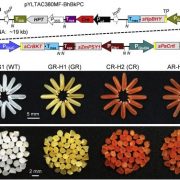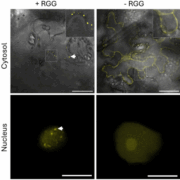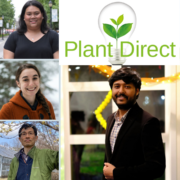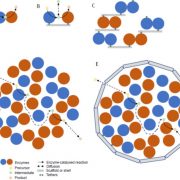Careers in Plant Synthetic Biology Part I: Introducing the modern steam mill
This post is part of a series looking at careers in Plant Synthetic Biology leading up to the 1st ASPB Plant SynBio meeting on the 7-9 Aug 2019, in San Jose CA. Follow the PlantSynbio2019 Twitter account for updates about the event.

By Неизвестный художник – Ярославский художественный музей, Public Domain, https://commons.wikimedia.org/…
Looking back 200 years in time to the Northwest of England may seem like an unlikely place to start an exploration of the latest trends in plant biology research. Perhaps even stranger, would be to draw parallels between today’s molecular biologists and the weavers who made cotton fabrics in the damp and rainy conditions of Lancashire (full disclosure – I grew up in the North West of England so not too far away!). Yet by looking at the changes in textile manufacturing in 19th century in Britain, we may be able to see what the future holds for molecular plant research.
One of the biggest changes of the industrial revolution was automation of production: up until the 1800s goods were made by hand, fabrics were created piecemeal by weavers holed up in their cottages (hence the origin of the term ‘Cottage Industry’). With the invention of the steam mill, where mechanised looms could perform the tasks of many weavers, production was centralized, products became standardized, industrial output increased and costs fell.
Today, molecular biologists could be viewed as fulfilling a role similar to the 18th century weavers – working piecemeal, each in their own space, but instead of making fabrics they are doing minipreps, ligations and PCR reactions – all by hand. Developments in synthetic biology, such as the invention of liquid handingly technology (such as Hamilton workstations, the Echo Acoustic Liquid Handler etc) mean that many of these tasks can now be automated.
Where is this happening? In modern biological steam mills known as Bio, DNA or Genome Foundries (also see refs 1 and 2) (See Table I). These automated laboratories have been central to the success of synthetic biology companies such as Ginkgo Bioworks by allowing research to proceed at previously unheard of scale and pace.
For those of you history buffs out there, you may recall that the introduction of steam mills also put a lot of weavers out of jobs (a radical group of which turned to smashing up mills and became known as Luddites after their leader, Ned Ludd). While we are still a while away from that situation, Molecular Biologists (me included!) would be well advised to start looking to the future, with this in mind I reached out to experts involved in BioFoundries to find out more about the types of work that can be found there, and how you might land a job. The outcome of those conversations will be two blog posts detailing wetlab and software roles in foundries and management positions. Stay tuned for more info!
Table I: List of BioFoundries
| Facility | City | Country |
| iBioFab | Urbana | USA |
| Concordia Genome Foundry | Montreal | Canada |
| MIT-Broad Foundry | Boston | USA |
| Agile BioFoundry Consortium of nine national labs | Distributed | USA |
| Edinburgh Genome Foundry | Edinburgh | UK |
| London DNA Foundry | London | UK |
| Earlham Institute | Norwich | UK |
| Synbiochem | Manchester | UK |
| GeneMill | Liverpool | UK |
| REALCAT | Lille | France |
| SynCTI Foundry | Singapore | Singapore |
| WISB Robotics Lab | Warwick | UK |
| SBRC Nottingham | Nottingham | UK |









Leave a Reply
Want to join the discussion?Feel free to contribute!